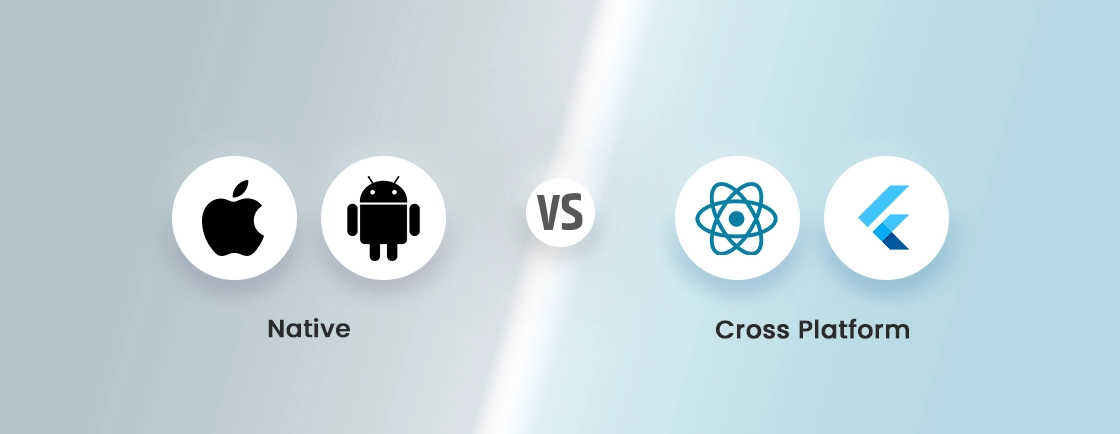Table of Contents
When trying to build a web application, you have two broad ways to proceed. You can either go for a web framework like Ruby on Rails or choose a content management system like Drupal.
Ruby on Rails, a developer-friendly framework, accelerates custom web apps with clean, convention-driven code. Drupal, a battle-tested CMS, on the other hand, delivers unmatched flexibility for content-heavy sites with complex workflows.
Through this blog, we’ll compare Ruby on Rails vs Drupal in an effort to help you choose the right platform for your project. Let’s jump straight in.
Ruby on Rails vs Drupal: A Quick Overview
| Factor | Ruby on Rails | Drupal |
|---|---|---|
| Type | Web application framework | Content Management System |
| Primary Language | Ruby | PHP |
| Core Purpose | Rapid development of web apps (custom portals, SaaS, APIs) | Building complex, content-rich websites & portals |
| Architecture | Model-View-Controller (MVC) | Modular, content-driven architecture |
| Customization | Highly customizable through code and gems | Highly customizable via modules, themes, and code |
| Ease of Use | Developer-friendly for those with Ruby/MVC experience | Steeper learning curve, especially for non-tech users |
| Community Support | Active, global developer community | Large, global, and highly engaged open-source community |
| Security | Strong security features built-in | Robust, with a dedicated security team |
| Scalability | Scales well for apps with proper architecture | Scalable for high-traffic, enterprise-class projects |
| Best for | MVPs, SaaS platforms, custom apps, fast prototyping | Large websites, multi-language sites, government portals |
| Content Workflow | Basic out-of-the-box; extendable via gems | Advanced, with granular permissions & workflows by default |
| Performance | Efficient, but may require optimization at scale | Reliable for content-heavy and high-traffic sites |
| Multilingual | Supported via plugins | Natively robust multilingual support |
| SEO Capabilities | Good, requires additional and manual setup | Built-in SEO modules and clean URL structure |
Overview of Ruby on Rails
Ruby on Rails is a web development framework written in the Ruby programming language. It’s renowned for its “convention over configuration” philosophy. So the developers can rapidly build robust, scalable web applications using clean, readable code.
This framework will be suitable for building web applications like MVPs, eCommerce stores, custom portals, and more. You’ll be able to launch fast and scale as your user base grows.
Key Features of Ruby on Rails
- MVC Architecture: Separates logic, UI, and data for organized development.
- Convention Over Configuration: Less boilerplate code, faster setup.
- Active Record: Simplifies database interactions with ORM.
- Built-in Testing: Encourages test-driven development (TDD).
- Gems & Libraries: Extensive plugins (e.g., Devise for auth, Sidekiq for background jobs).
Pros of Ruby on Rails
- Fast development & prototyping.
- Strong community & documentation.
- Scalable for startups & SaaS apps.
- Secure by default (CSRF protection, SQL injection guards).
Cons of Ruby on Rails
- Performance bottlenecks at high scale vs. Go/Elixir.
- Less ideal for content-heavy sites (vs. CMS like Drupal).
- Steeper learning curve for non-Ruby developers.
So, if you find this framework suitable for your project, hire our professional web developers. We have years of experience with this framework and can help bring out the best results.
Overview of Drupal
Drupal is a powerful open-source content management system (CMS) designed for complex, content-heavy websites. Highly flexible and scalable, it powers everything from government portals to enterprise platforms.
With robust modules and granular permissions, Drupal excels where security, customization, and structured content matter most.
Key Features of Drupal
- Content Architecture: Advanced content types, taxonomies, and workflows.
- Modular Ecosystem: 50,000+ modules (e.g., Views, Paragraphs) for extended functionality.
- Enterprise-grade Security: Trusted by governments and Fortune 500 companies.
- Multilingual Support: Built-in translation tools for global sites.
- Headless/Decoupled Options: API-first for modern front-end frameworks.
Pros of Drupal
- Unmatched flexibility for large, content-driven sites.
- Strong security & compliance (ideal for regulated industries).
- Handles high traffic & complex user roles efficiently.
- Thriving community & long-term support (LTS releases).
Cons of Drupal
- Steeper learning curve vs. WordPress or simpler CMS.
- Requires more development time for customization.
- Higher hosting & maintenance costs for advanced setups.
Drupal is an excellent platform for building large-scale, content-rich websites. It offers granular control over user permissions and workflows. To that end, for the best results, our dedicated Drupal development services will be most suitable.
Detailed Difference Between Ruby on Rails & Drupal
Ruby on Rails and Drupal are both excellent for those searching for reliable, scalable web applications. But each of them operates on different philosophies and delivers unique strengths. To choose between them most effectively, check out this comparison based on the most important factors.
Programming Language
Ruby on Rails is built on Ruby, a dynamic, object-oriented language optimized for developer productivity and clean syntax. Its conventions reduce boilerplate code, making it ideal for rapid application development.
Drupal uses PHP, a widely adopted server-side language known for web development. PHP’s flexibility powers Drupal’s extensive module system but can lead to verbose code in complex setups.
Verdict: Ruby on Rails wins for developer efficiency; Drupal leverages PHP’s broader CMS compatibility.
Architecture
Ruby on Rails follows a strict Model-View-Controller (MVC) pattern. It enforces a clean separation between data logic (Model), user interface (View), and application flow (Controller). Its “convention over configuration” philosophy minimizes setup time. That makes it ideal for structured, rapid development.
Drupal, meanwhile, uses a module-driven, event-based architecture with hooks and plugins. It allows for deep customization but requires more configuration. Its flexibility excels in content-heavy systems but adds complexity compared to Rails’ streamlined MVC approach.
Verdict: Ruby on Rails is cleaner for structured apps; Drupal offers deeper CMS customization.
Customization
Ruby on Rails shines in building custom business logic and unique applications through its modular gems and clean code structure. While it offers flexibility for tailored solutions, complex content management requires additional development effort.
Drupal was built for customization. Its vast module ecosystem enables sophisticated content architectures, workflows, and display configurations out of the box. The trade-off is increased complexity when deviating from its content-centric paradigm.
Verdict: Rails for bespoke applications; Drupal for configurable content systems.
Ease of Use
Ruby on Rails prioritizes developer experience with its intuitive conventions and clean syntax. That allows for rapid prototyping with minimal configuration. However, its reliance on Ruby means a steeper initial learning curve for those unfamiliar with the language.
Drupal presents a more complex interface. So you need significant technical knowledge to properly configure modules and content structures. While powerful, its administrative dashboard and theming system demand dedicated training for non-developers to use effectively.
Verdict: Rails for developer productivity; Drupal for technical teams managing complex content.
Security
Ruby on Rails incorporates security by design. It offers built-in protections against common vulnerabilities like SQL injection and CSRF attacks. Its opinionated framework reduces risky configurations, though maintaining gem dependencies requires vigilance.
Drupal offers enterprise-grade security with dedicated security teams, regular patches, and robust access controls. This platform’s complex module ecosystem can introduce risks. But its security protocols make it trusted for high-stakes government and financial applications.
Verdict: Drupal for mission-critical security; Rails for secure application development.
Scalability
Ruby on Rails scales efficiently for mid-sized applications with clean architecture and tools like background jobs for performance. It handles growing user bases well. But extremely high-traffic systems may require microservices or infrastructure optimization to maintain responsiveness.
Drupal excels at scaling content-heavy platforms, with robust caching mechanisms and database optimization handling millions of pages. Its modular design supports enterprise-level expansion. But complex sites demand careful resource management to prevent performance bottlenecks.
Verdict: Rails for scalable apps; Drupal for large content platforms.
Content Workflow
Ruby on Rails requires custom development for sophisticated content workflows. That makes it better suited for applications where content management isn’t the primary focus. While flexible, building complex editorial processes demands additional coding effort.
Drupal excels in native content workflow capabilities. It offers revision tracking, approval systems, and granular permissions out of the box. Its structured content architecture simplifies managing multi-stage publishing processes for large teams.
Verdict: Drupal for enterprise content workflows; Rails when content is secondary to functionality.
Performance
Ruby on Rails delivers strong performance for dynamic web applications. And recent Ruby versions significantly boost the execution speed. Its efficient MVC architecture minimizes overhead. But database-intensive operations may require optimization to maintain responsiveness at scale.
Drupal prioritizes flexibility over raw speed, with performance heavily dependent on proper caching configuration. While capable of handling high traffic, complex content-rich sites often need tuning through CDNs and database optimization. That’s how you achieve optimal load times.
Verdict: Rails for faster execution; Drupal requires tuning for best performance.
Multilingual Capabilities
Ruby on Rails requires third-party gems like Mobility or Globalize to implement multilingual features. That means added development overhead, albeit flexible. But creating and maintaining multiple language versions demands custom solutions for content storage and retrieval.
Drupal provides robust multilingual support natively. You get built-in tools for translation management, language detection, and content localization. Its intuitive interface simplifies maintaining multilingual sites. That makes it ideal for global organizations needing seamless language switching.
Verdict: Drupal for ready-to-use multilingual solutions; Rails for custom implementations.
Support
Ruby on Rails benefits from an active open-source community and commercial backing from the likes of Shopify. It offers extensive documentation tutorials, and third-party resources. While enterprise support exists, it’s primarily developer-driven rather than vendor-backed.
Drupal provides formal enterprise support through Acquia and certified partners. That is complemented by long-term release cycles and security advisories. Its structured ecosystem makes it preferable for organizations requiring guaranteed maintenance and professional assistance.
Verdict: Drupal for institutional support; Rails for community-driven resources.
Final Verdict
Ruby on Rails excels for rapid development, clean code, and customization flexibility. That makes it ideal for web applications where user interaction, transactional logic, and fast launches matter most.
On the flip side, Drupal dominates in scenarios prioritizing complex content management, security, workflows, and more.
But the best choice depends on your project goals and budget. So consult with our professional web development company in India for a detailed consultation and implementation. We can offer you the best services with the benefits of cost-efficiency.
When to Choose Ruby on Rails & Drupal?
Choosing between Ruby on Rails and Drupal depends on their strengths, trade-offs, and most of all, the use cases. So let’s check out when to choose these two platforms.
Choose Ruby on Rails If You Need…
- A custom web application (SaaS, marketplace, or API-driven product)
- Rapid development for startups or MVPs with clean, maintainable code
- Developer productivity with convention-over-configuration efficiency
- Scalable architecture for business logic-heavy systems (e.g., fintech, e-commerce backends)
Choose Drupal If You Need…
- A content-heavy website (publishing, education, government portals)
- Advanced content workflows with revisions, approvals, and granular permissions
- Enterprise-grade security and compliance (e.g., healthcare, banking)
- Out-of-the-box multilingual or complex taxonomy requirements
Basically, you need to pick based on whether your project is application-first (Rails) or content-first (Drupal).
FAQs on Ruby on Rails vs Drupal
Can Drupal handle high-traffic websites?
Yes, Drupal scales well for content-rich sites with proper caching. But Rails may outperform for dynamic applications under heavy load.
Which has better security? Ruby on Rails or Drupal?
Drupal offers enterprise-grade security for high-risk sites, while Rails provides strong defaults but needs careful gem management.
Can I build an eCommerce site with both Ruby on Rails and Drupal?
Yes, but Rails (with Solidus/Spree) fits custom storefronts better, while Drupal (with Commerce) excels in content-driven product catalogs.
Can Ruby on Rails and Drupal work together?
Yes, Drupal can serve as a content backend (headless CMS) while Rails powers custom frontends via APIs.
Which performs faster: Ruby on Rails or Drupal?
Rails generally delivers better performance for applications, while Drupal requires optimization for content-heavy sites.
So, Which is Better? Ruby on Rails or Drupal?
There’s no universal winner. The answer depends entirely on your project’s core needs.
If you’re building a custom web application, SaaS product, or API-driven service, Ruby on Rails is the clear choice. But if you need a secure, content-heavy website with complex workflows, Drupal is what you should opt for. Evaluate your needs, resources, and long-term goals and select accordingly.
So, want help with building the best web application? Then connect with our expert web developers today!





